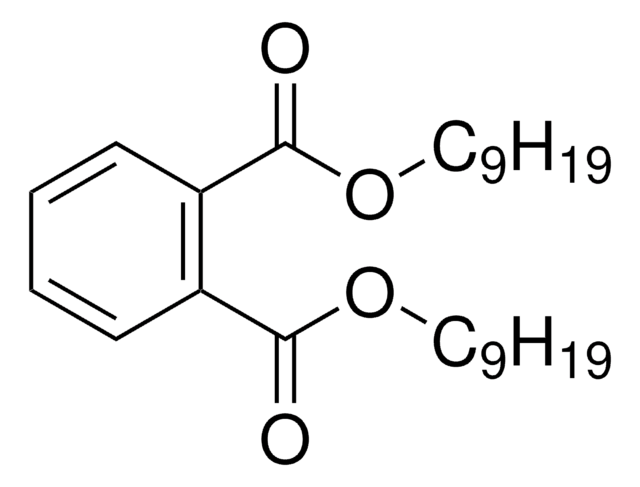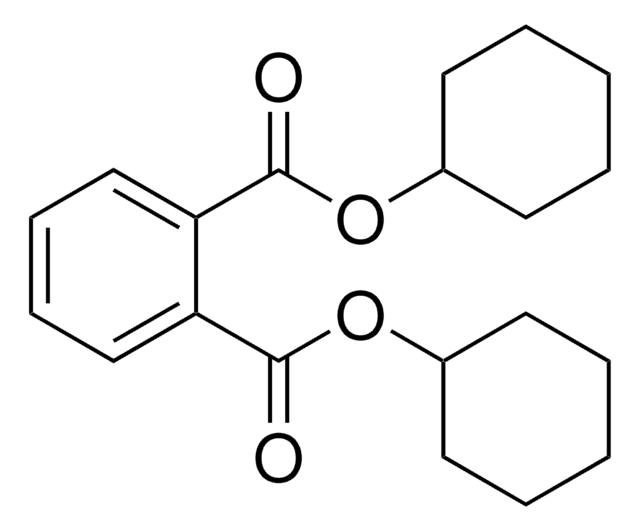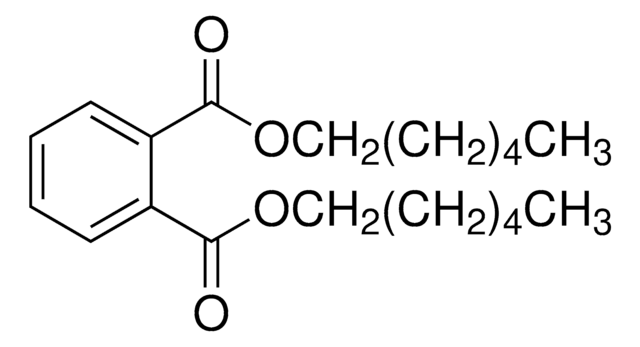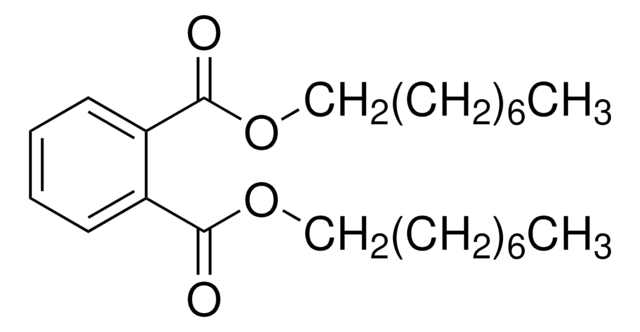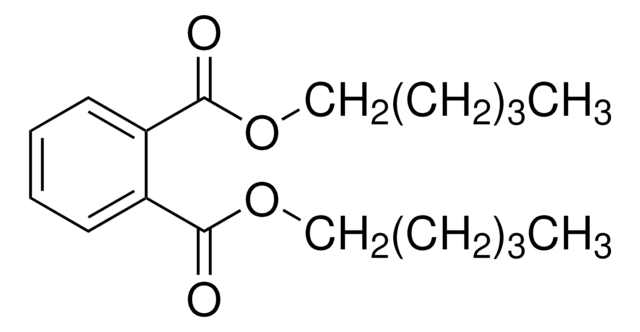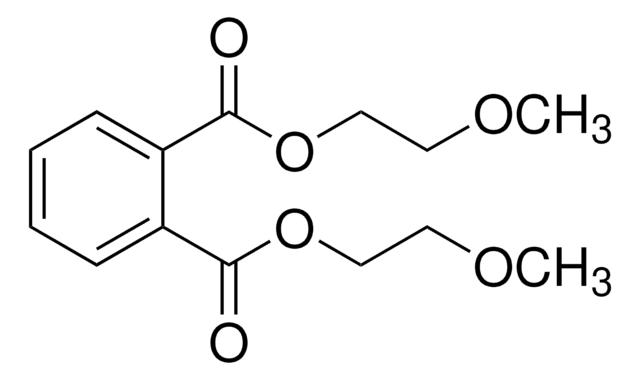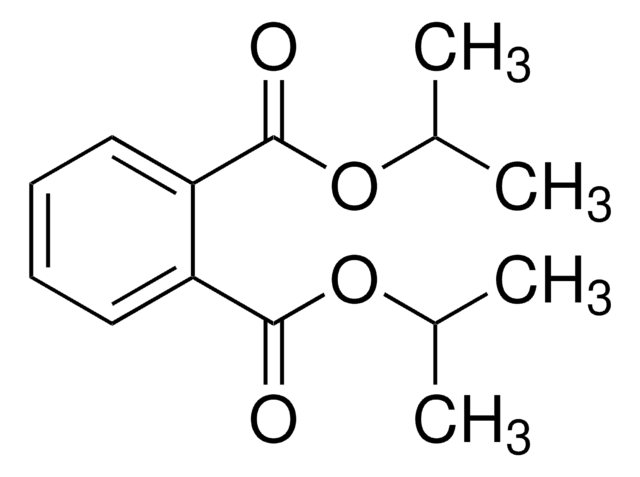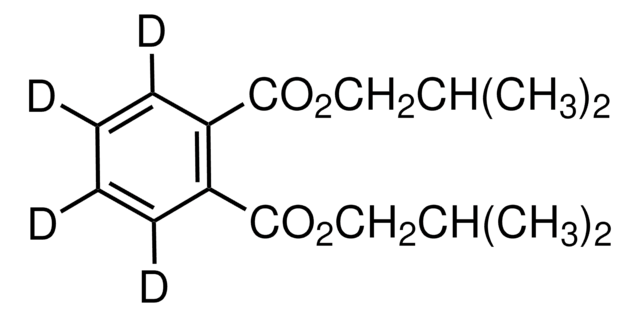152641
Diisobutyl phthalate
99%
Sinonimo/i:
DIBP
About This Item
Prodotti consigliati
Livello qualitativo
Saggio
99%
Stato
liquid
Indice di rifrazione
n20/D 1.49 (lit.)
P. ebollizione
327 °C (lit.)
Densità
1.039 g/mL at 25 °C (lit.)
Stringa SMILE
CC(C)COC(=O)c1ccccc1C(=O)OCC(C)C
InChI
1S/C16H22O4/c1-11(2)9-19-15(17)13-7-5-6-8-14(13)16(18)20-10-12(3)4/h5-8,11-12H,9-10H2,1-4H3
MGWAVDBGNNKXQV-UHFFFAOYSA-N
Cerchi prodotti simili? Visita Guida al confronto tra prodotti
Categorie correlate
Avvertenze
Danger
Indicazioni di pericolo
Consigli di prudenza
Classi di pericolo
Aquatic Acute 1 - Aquatic Chronic 1 - Repr. 1B
Codice della classe di stoccaggio
6.1C - Combustible acute toxic Cat.3 / toxic compounds or compounds which causing chronic effects
Classe di pericolosità dell'acqua (WGK)
WGK 3
Punto d’infiammabilità (°F)
228.2 °F - closed cup
Punto d’infiammabilità (°C)
109 °C - closed cup
Dispositivi di protezione individuale
Eyeshields, Gloves, multi-purpose combination respirator cartridge (US)
Scegli una delle versioni più recenti:
Possiedi già questo prodotto?
I documenti relativi ai prodotti acquistati recentemente sono disponibili nell’Archivio dei documenti.
I clienti hanno visto anche
Global Trade Item Number
| SKU | GTIN |
|---|---|
| 152641-18L | |
| 152641-1L | 4061838740472 |
| 152641-100ML | 4061838740465 |
| 152641-4L |
Il team dei nostri ricercatori vanta grande esperienza in tutte le aree della ricerca quali Life Science, scienza dei materiali, sintesi chimica, cromatografia, discipline analitiche, ecc..
Contatta l'Assistenza Tecnica.


